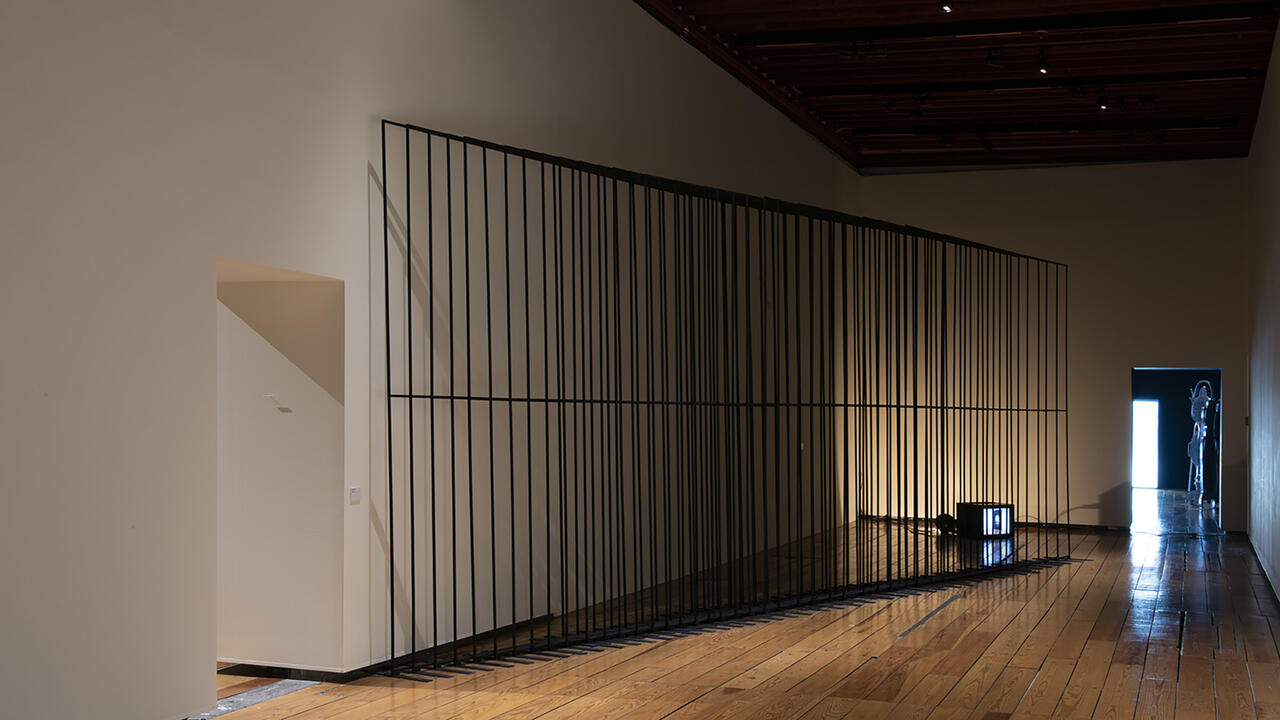Michael Gonzalez
A cursory listing of the materials with which Michael Gonzalez has been making art over the last decade or so might lead to an inaccurate characterisation of the artist as belonging to the Californian heritage of assemblage art. Although rubber erasers, metal key rings, aluminium shaft collars, shower suction pads, plastic bread bags and after-shave bottles have found their way into his work, Gonzalez is no rusty scupper swoozily attached to the nostalgic aura of discarded material culture. In his hands, these unusual materials are vehicles not for fuzzy retrospection, but for crystalline hallucinations on the future. The most recent works exhibited here push the visionary aspects of Gonzalez' project into heretofore undiscovered territory.
One of the mainstays of Gonzalez' art over the past several years, returned to at intervals between other bodies of work, have been the small 'eraser pictures' he assembled by precisely cutting and joining German erasers into geometric compositions. In this exhibition, the artist has introduced a new series, all titled Mars Plastic Grand (after the eraser), that lead double lives both as pleasing abstractions and even more intriguing architectural ruminations. Mars Plastic Grand #6 (1996) is one such Janus-faced arrangement of slick materials; the combination of bright blue urethane, clear erasers and translucent silicone rubber forms a sturdy pictorial tectonics that can be read as a non-objective formal puzzle or a cross-section of a complicated, cliff-hanging dwelling. Mars Plastic Grand #7 (1996), while holding up as a self-respecting abstraction also invites representational speculation, this time suggesting an aerial view of an industrially-encrusted coastline, with a large, opaque white eraser sited along the border of a beige gum rubber land mass. Gonzalez has left the text exposed on this central eraser, a decision that smartly lends further narrative to the picture - perhaps this is an insidious eraser factory - and simultaneously dismantles the fantasy by bluntly reminding the viewer of the prosaic nature of the illusion.
This ambidextrous handling of transcendent fiction and humbling fact is also a hallmark of the images Gonzalez has fabricated with primary-coloured dots cut from Wonder Bread bags. Sandwiching these translucent disks of thin plastic between multiple layers of Perspex in arrangements that suggest deep recessions into space, the artist creates dazzling vortices of ambient colour that engulf the gaze.
In Comp. w/Red #2 (1996), larger circles are placed around the outer edges of the frame and nearest to the viewer, gradually receding in size towards the centre of the composition and the deeper sheets of Perspex. The resulting mirage can be probed like galactic space or imagined as a microscopic trip through the bloodstream; yet both methods of extra-corporeal travel are inevitably tethered to the mundanity of the materials.
Gonzalez further tests this frontier between escapism and the inescapable in a new body of work made from paper menus designed to hang on doorknobs. Placed on alternating levels of Perspex like the Wonder works, these coloured rectangles in banal shades of pink, yellow, white, blue and gold read, from a distance, as relatives of the floating planes of early Ad
Reinhardt paintings. Up close, however, the reality of unabashed commercialism becomes apparent, as each zone of colour is merely the ground for lengthy listings of specialities at Thai restaurants. The dishes and prices from Siam Place, Siam Best, Siam Chan, Flower of Siam and Siam Hut in Menu Comp. #1 (1995) are almost interchangeable; standardised information that is as dependable as the pure pigments of the Reinhardt paintings with which they are forced into an association. Even though this textual information is reduced to predictability through repetition across each of the menus, its insistent iteration of concrete and familiar cultural realities - language, food, ethnicity - disallows the kind of reverie that is possible in Gonzalez' other bodies of work.
The menu pictures operate as traditional artistic vehicles of visual pleasure and provocation, but have also gained the status of social documentation: they function equally as time capsules of the particularised time and space of mid-90s West Los Angeles. Within the ever-diversifying range of Gonzalez' work, this series signifies a new and different trajectory in the artist's practice, one which is still attuned to clean design, arresting composition and transformative plays of space, but which is also guided by the messier forces of the culture affecting life in this complicated metropolis.














